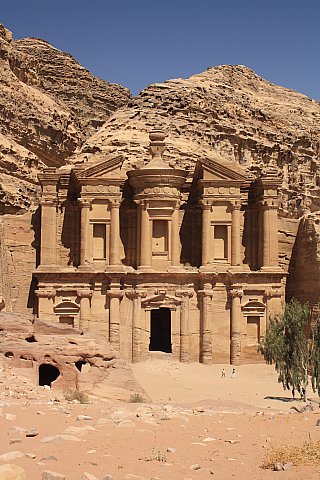


After a walk through a shadowy, narrow gorge in the desert, a light appears through the sandstone mountain slits. There is where I got my first glimpse of the iconic Treasury. The elaborate tomb’s façade was carved by the mysterious Nabateans between 100 B.C. and 200 A.D. This iconic structure is reason enough for many people to journey to Jordan.
I tried to imagine Swiss explorer, Johann Ludwig Burckhardt’s glee when he beheld the towering tomb for the first time in 1812. Prior to his discovery, Petra lay unknown to Europeans, since it was guarded by the locals who believed the place held a legendary treasure. This myth that the Treasury building was anything more than a tomb proved to be untrue. However, what the locals eventually came to realize after Burckhardt spread the word about a lost city carved into sandstone was that the treasure was there all along. People began traveling in droves to see the expansive ruins of Petra, which helped out the local economy more than anything else.
But the Treasury is just one of hundreds of decorative tombs influenced by Greek architecture. The Nabateans valued the afterlife over the current life, so even those not wealthy could sometimes afford a carved tomb into the mountains.
The ruins of Petra seemed to keep going on and on as I toured the UNESCO World Heritage Site. I could easily see why this incredible city was voted one of the New Seven Wonders of the World. Swirls of vivid red, yellow and orange stone decorated the ruins better than any paint could have.
After lunch in Petra, I climbed up 800 or so steps to see the Monastery. This elaborate tomb impressed me even more than the others from its remoteness at the top of a mountain with views of Petra all around.
That evening, I sat down to a traditional Jordanian dinner that I had cooked myself (with a little help of course) at Petra Kitchen. Even now, I’m looking forward to attempting that meal’s delicious recipes for my husband. I’ll consider it a success if the food is even half as good.














